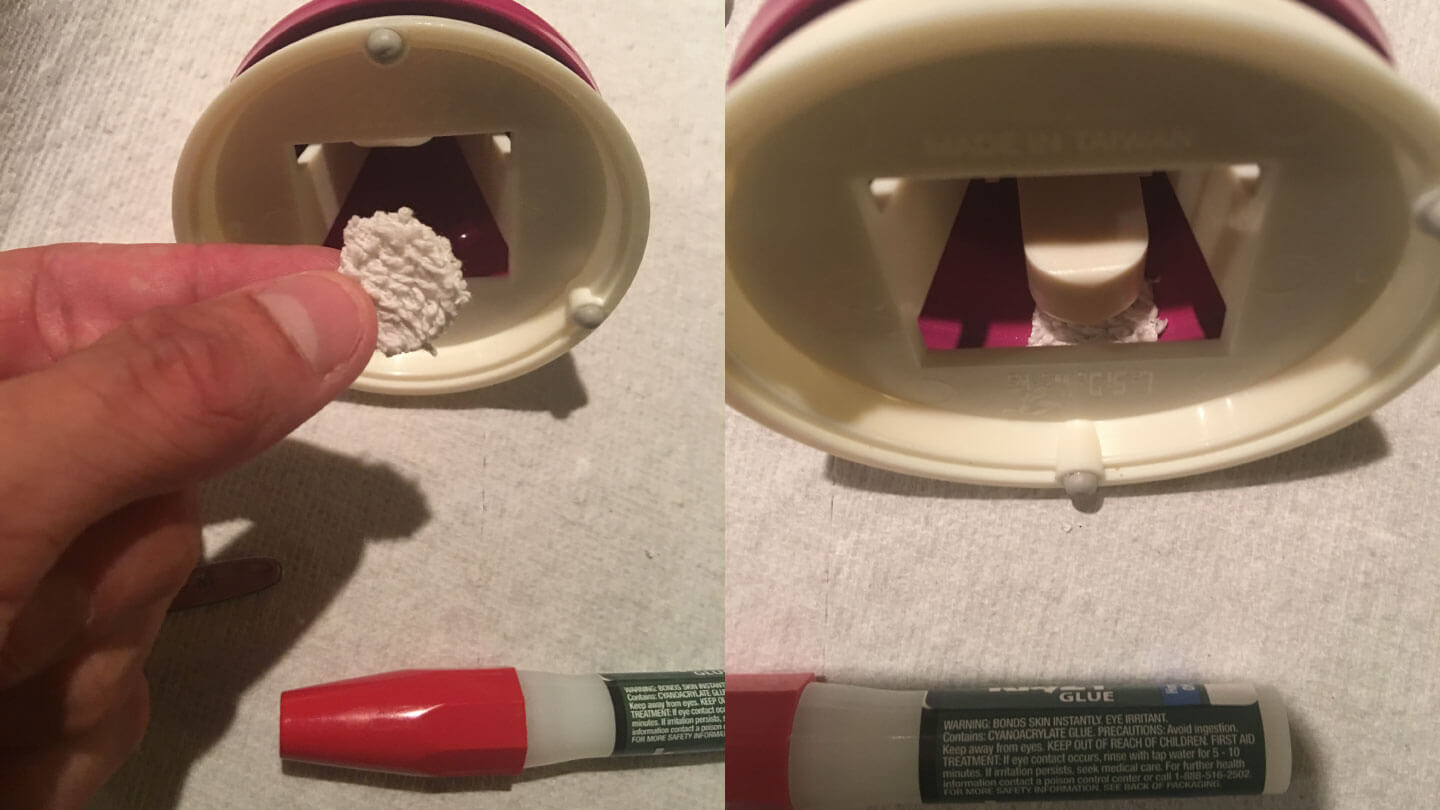Hey everyone!! Mr. Rob here with a quick tip about how to make my favorite instrument (the deskbells of course) a bit easier on the ears!
Keep in mind that I’m not particularly savy with crafts and crafting supplies, and I look forward to some of you Pinterest moms out there helping me improve on this simple yet important idea. That said, here goes…

The Deskbells Are Loud
There’s no getting around the fact that the deskbells that we recommend are pretty loud. They’re durable, well-tuned and amazingly useful in a music classroom, but the loudness factor has definitely been a consistent complaint.
Depending on where you play the bells, you might even end up making them louder. For instance, any kind of large wood or metal surface that bells sit on will act as a resonator, and make them even louder.
With that in mind, you can try putting a towel or blanket down and playing the bells on top of that. While that does work to soften the overall loudness, it doesn’t really cut back on the plastic on metal mechanism that makes it really loud on the inside.
Softening the Hammer
When you play a xylophone or marimba, and you want to change the tone and the loudness of your instrument, you generally look for a different pair of mallets to play with. Hard rubber mallets are faster with more attack, while softer felt mallets give you a warmer tone (while sacrificing the bounce factor a bit).
So to soften the sound of the bells, our objective is to get some kind of felt inbetween the plastic hammer arm that swings on the inside, and the metal bell that it’s striking.
To do that, you will need…
- Some kind of long-lasting glue (I used Krazy Glue, but anything strong and long lasting should work).
- A scissor
- Some felt or a rag – this should be on the thinner side, because even the introduction of a little material like this is going to go a long way to softening the tone.
Then, all you need to do is glue a small piece of felt to the ball of the hammer OR (and this is probably better) to inside of the bell itself (where the hammer strikes the bell).
That’s it. And while it’s simple in theory, it’s a little harder to do thanks to the small and intricate nature of the bell. Below are a couple tips for getting the felt in there without too much trouble.
The Step By Step
- Cut a piece of felt or rag that’s a little bigger than your thumbnail.
- Place two-three drops of glue where the bell hammer meets the metal shell.
- Place the felt on the glue and use the bell hammer to press the material against the bell as it dries.
- Give it 20-30 minutes to dry before trying to play it too much.
The only real trick I found in trying to make this work was putting the felt into the bell on the side opposite the hammer (where it’s open an easy to get to). Then with the felt in the bell, you can spin and guide the felt/cloth into place, which is a little bit easier than trying to get the felt underneath the hammer in a more direct fashion.

Getting the glue in the right place is kind of tough though. It just takes some good light, some dexterity and some tweezers or a small something to get in there. I use a Krazy Glue stick and managed to get two drops to fall into the right place (where the hammer hits the bell) before sliding the cloth into place.
Now, when I got my cloth glued in there, it took about 20 minutes to dry and actually begin working the right way. In the first 20 minutes or so, it didn’t sound like anything, but as the air bubbles filled with glue and the connection got a little more secure, the bell started working again.
Note that if you get the cloth or felt to stick to the hammer as opposed to the bell itself, that will work also. That’s actually what happened to first attempt and they work pretty much the same. However, I’d venture a guess that the one stuck to the inside of the bell will last longer.
A Rather Drastic and Permanent Fix
Now, the problem with this fix is that it’s both both permanent (or at least not easily removed) and that it dramatically changes the sound of the bell. It doesn’t change the pitch of the bell (which is important) but it does dramatically change the tone of the attack, making it A LOT softer on the ears. If you’ve read this far, that’s probably something you’re looking for, but I just want to warn you that it’s more than just a little quieter – it’s a definite change in the sound of the attack.
It’s actually a nice change as it removes the hard plastic on metal sound, but I wish that I had use slightly thinner cloth or felt to make it a little less drastic. Below you can see and hear the difference between two B bells (one altered and one not) so you can see for yourself how it sounds!
Please Test, Improve and Share
As I mentioned, I am not a particularly crafty person. I mean, I guess I made a pretty killer 3D Led Zeppelin diorama in high school, but otherwise, my skills with glue, string and other tiny pieces of material is rather embarrassing.
With that in mind, PLEASE take this idea and run with it. Make it better, make it easier, and share it below!
As far as other materials goes, I tried using furniture pads (which are small and sticky) but they all were too thick and too bulky to really work well.


